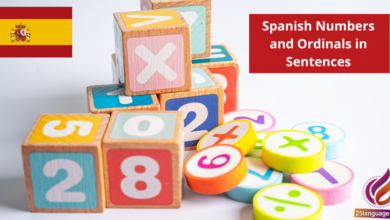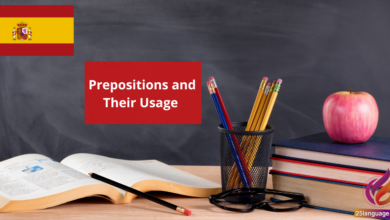Spanish Irregular Verbs Ser, Estar, Tener, Hacer

Unlock the secrets of Spanish with a dive into four essential irregular verbs: ser, estar, tener, and hacer.These powerful verbs form the backbone of everyday conversation, enabling you too express identity, emotions, possession, and actions with ease.Understanding their unique conjugations and uses will elevate your Spanish skills, allowing you to communicate more naturally. Join us as we unravel these key verbs and empower your journey toward fluency!
Mastering the essentials of Spanish Irregular Verbs
Understanding irregular verbs in Spanish is essential for mastering the language, as these verbs do not follow standard conjugation patterns. Some of the most common irregular verbs include ser (to be), ir (to go), and tener (to have). Here are a few key points on these verbs:
- Ser: Used to describe identity, origin, and inherent qualities. Its present tense conjugation is soy (I am), eres (you are), es (he/she/it is), somos (we are), sois (you all are), son (they are).
- Ir: Means “to go” and employs the forms voy (I go), vas (you go), va (he/she/it goes), vamos (we go), vais (you all go), van (they go).
- Tener: Translates to “to have” and is conjugated as tengo (I have), tienes (you have), tiene (he/she/it has), tenemos (we have), tenéis (you all have), tienen (they have).
| Spanish Verb | Present Tense Conjugation | English Translation |
|---|---|---|
| Ser | soy, eres, es, somos, sois, son | to be |
| Ir | voy, vas, va, vamos, vais, van | to go |
| Tener | tengo, tienes, tiene, tenemos, tenéis, tienen | to have |
In addition to the present tense, irregular verbs also change in other tenses. For instance, the past tense conjugations of ir change completely: fui (I went), fuiste (you went), fue (he/she/it went), fuimos (we went), fuisteis (you all went), fueron (they went). It is indeed also critically important to note that tener has a unique verb form for its past participle which is tenido. Here are some sentences illustrating these verbs:
- Yo soy estudiante. (I am a student.)
- Ellos van al cine. (They go to the cinema.)
- Nosotros tenemos un perro. (We have a dog.)
Exploring the Distinctions Between Ser and Estar
In Spanish, the verbs ser and estar both mean “to be,” but they are used in different contexts. Understanding when to use each verb is crucial for mastering Spanish. Here are the main distinctions:
- Ser is used for permanent or defining qualities:
- Ella es doctora. (She is a doctor.)
- la casa es grande. (The house is big.)
- Somos amigos. (We are friends.)
- Estar is used for temporary states or locations:
- Estoy cansado. (I am tired.)
- La tienda está cerrada. (The store is closed.)
- Estamos en el parque. (We are at the park.)
| Spanish Example | Usage (Ser vs. Estar) | English Translation |
|---|---|---|
| Él es ingeniero. | Ser - Permanent quality | He is an engineer. |
| Estás feliz. | Estar – Temporary state | You are happy. |
| Estamos cansados. | Estar – Temporary state | We are tired. |
| Ellos son estudiantes. | Ser – Permanent quality | They are students. |
| La comida está deliciosa. | Estar – Temporary state | The food is tasty. |
Understanding tener and Hacer in Context
Tener and hacer are two of the most frequently used verbs in Spanish. Understanding their uses in context is crucial for communication. The verb tener means “to have” and is often used to express possession,age,and necessity. Here are some important aspects to keep in mind when using tener:
- Possession: “Tengo un perro.” (I have a dog.)
- Age: ”Tengo veinte años.” (I am twenty years old.)
- Necessity: “Tengo que estudiar.” (I have to study.)
The verb hacer translates to “to do” or “to make” and is frequently used in various expressions.It can indicate activities and weather, among other contexts. Key usages of hacer include:
- Actions: “Hago mi tarea.” (I do my homework.)
- Weather: “Hace frío.” (It is cold.)
- Making or creating: “Hice un pastel.” (I made a cake.)
| Spanish Example | English Translation | Grammar Rule |
|---|---|---|
| Tengo una cama. | I have a bed. | Possession |
| Hago ejercicio todos los días. | I do exercise every day. | Action |
| Hace sol hoy. | It is indeed sunny today. | Weather Expression |
| Tengo que ir al médico. | I have to go to the doctor. | Necessity |
| Hice un dibujo. | I made a drawing. | Creating |
Practical Strategies for using Irregular Verbs Effectively
One of the primary challenges in mastering Spanish is grappling with irregular verbs, which do not follow the standard conjugation rules. To tackle these exceptions effectively, it’s essential to categorize them and practice regularly. Here are some strategies to help you:
- Learn the most common irregular verbs in context,such as ser (to be),ir (to go),and tener (to have).
- Create flashcards with the verb on one side and its conjugations on the other, for example, ser: soy (I am), eres (you are), es (he/she/it is), somos (we are), son (they are).
- Practice conjugation with sentences; for instance: Ella es alta. (She is tall.) or Yo tengo un perro. (I have a dog.)
Additionally, understanding the patterns that irregular verbs follow can greatly enhance your learning process. Some irregular verbs share similar endings or roots, making it easier to remember them. Here’s a simple table to compare some common irregular verbs and their conjugations:
| Spanish Verb | Conjugation (yo) | English Translation |
|---|---|---|
| ser | soy | I am |
| ir | voy | I go |
| tener | tengo | I have |
| hacer | hago | I do/make |
| venir | vengo | I come |
regular conversation practice will help reinforce your understanding of these verbs in context. Try forming sentences in everyday scenarios, like shopping or making plans with friends. Sample sentences include: ¿Vas al cine mañana? (Are you going to the cinema tomorrow?) and Yo hago la tarea. (I do the homework.)
Key Takeaways
¡Excelente trabajo hoy, estudiantes! Hemos explorado juntos algunos de los verbos irregulares más importantes en español: ser, estar, tener y hacer. Estos verbos son fundamentales para la comunicación y te permitirán expresar una variedad de ideas y sentimientos.
Recordemos que ser se usa para describir la identidad y características permanentes, mientras que estar se centra en estados temporales y ubicaciones.Tener es esencial para hablar sobre posesiones y responsabilidades, y hacer te ayudará a referirte a acciones y actividades cotidianas. Cada uno de estos verbos tiene sus propias conjugaciones y matices, por lo que es clave practicarlos para dominarlos.Te animo a que incorpores estos verbos en tu vida diaria. Intenta formar frases sencillas, haz ejercicios escritos o conversa con hablantes nativos. Cuanto más practiques, más cómodo te sentirás al usarlos en diferentes contextos.
Recuerda, el aprendizaje de un nuevo idioma es un viaje, y cada paso te acerca más a la fluidez. ¡Sigue adelante y no dudes en repasar esta lección! Estoy seguro de que verás cómo se convierten en herramientas útiles en tu camino hacia el dominio del español. ¡Hasta la próxima!





























